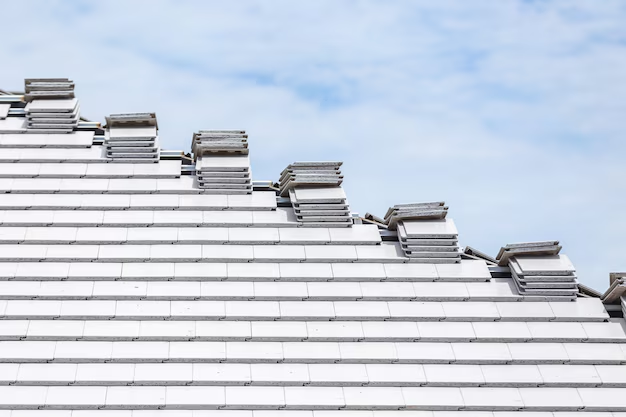Understanding Ridge Vents: The Essential Guide for Homeowners
When you stare up at a roof with curiosity, you might wonder about the various components and how they contribute to the comfort of a home. One of these crucial, yet often overlooked, elements is the ridge vent. But what is it, and why should homeowners care?
What is a Ridge Vent and Why Does it Matter?
A ridge vent is a fixed ventilation system installed along the ridge line, or the peak, of a sloped roof. Its primary function is to facilitate the continuous airflow through the attic, ensuring that your home breathes easily—just like you do! Often invisible from the ground, ridge vents blend into the roofline, working silently to protect and preserve the integrity of your home.
Here's why ridge vents matter:
- Temperature Regulation: By allowing hot air to escape in the summer, ridge vents help keep your attic cool, which in turn eases the burden on your air conditioning system and cuts energy costs.
- Moisture Control: In winter, ridge vents prevent moisture buildup, which could lead to mold growth, wood rot, and structural damage.
- Energy Efficiency: With better temperature regulation, your heating and cooling systems work more efficiently, reducing energy consumption and saving money.
The Mechanics of Ridge Ventilation
Ridge vents operate on the principle of natural convection. Warm air within the attic rises toward the peak and escapes through the ridge vent. Meanwhile, cooler air is drawn in through soffit vents at the roof's edge, creating a balanced ventilation cycle. This setup not only preserves the roof's lifespan but also enhances indoor comfort.
Types of Ridge Vents
There are several types of ridge vents:
- Roof Ridge Vents: These are popular and effective, fitting seamlessly with the roof design.
- Shingle-Over Ridge Vents: As their name suggests, these vents are covered by shingles, enhancing their aesthetic appeal while offering functionality.
- Aluminum Ridge Vents: While less common, these are durable and often chosen for their robust structure.
Installing a Ridge Vent: Consider Professional Help
While installing a ridge vent might seem straightforward, it requires precision and expertise to ensure maximum efficiency. Hiring a professional ensures that installation meets building codes and the roof remains intact. Professional installation might incur an upfront cost, but consider it an investment toward long-term savings and home safety.
Beyond Roofing: Financial Benefits and Assistance
Understanding and investing in ventilation systems like ridge vents is a savvy move for homeowners concerned about energy efficiency and home maintenance. But projects like these can seem daunting financially. The good news is, there are government aid programs and financial assistance options available:
Unlock Financial Support Options
- ✅ Energy-Efficiency Grants: Many local governments offer grants for home renovations that improve energy efficiency, including roof ventilation upgrades.
- 💡 Low-Interest Home Improvement Loans: These loans can make your home upgrade project more manageable by spreading payments over time.
- 💳 Credit Card Solutions for Home Repairs: Some credit cards offer promotional financing for home projects, allowing you to tackle immediate expenses without breaking the bank.
- 🏠 Weatherization Assistance Programs: Federally funded initiatives like the Weatherization Assistance Program help low-income households improve home efficiency.
- 📚 Educational Workshops: Community centers often conduct workshops educating homeowners on cost-effective home improvements and available grants.
By understanding what a ridge vent is and how it impacts both your home and finances, you're well on your way to making informed decisions that protect your investment and enhance your living environment. Consider the various financial avenues to ease the burden, and take a proactive step toward a more sustainable, comfortable home.
